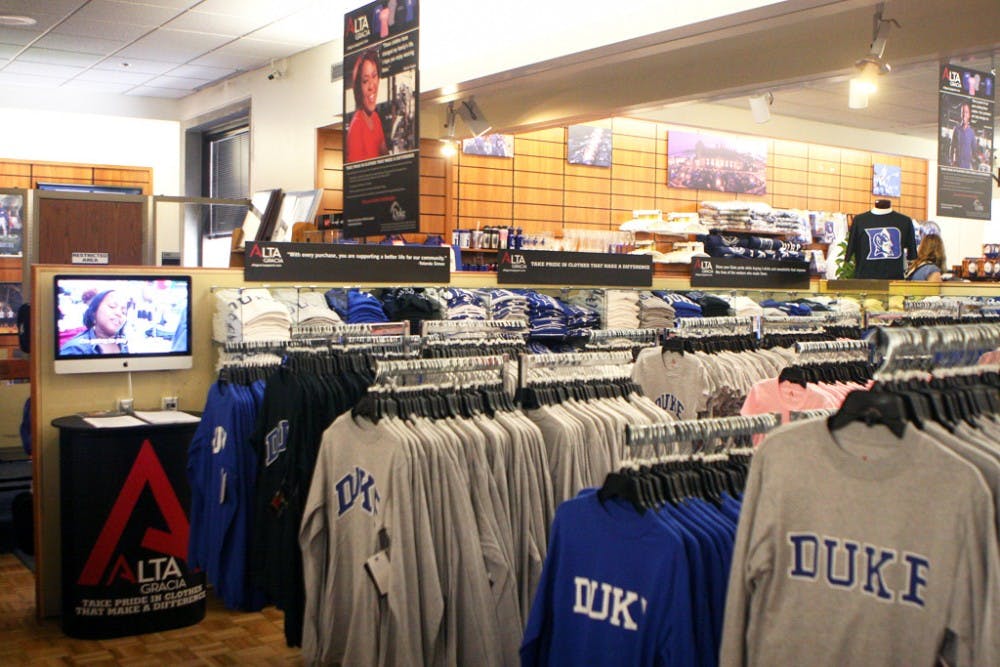In Fall 2010, Duke became the first university to place an order with Alta Gracia, an apparel factory committed to ethical working standards. Eighteen months later, more than 400 universities have followed suit.
According to a recent report by Georgetown University, the University’s initial investment seems to have paid off, leading to high profits and public support. Lead researchers John Kline and Ed Soule determined that Alta Gracia’s apparel sells at the same rate as comparable products and sees the same profit margins as competing brands. Dominican Republic-based Alta Gracia stands apart from its competitor as the first apparel factory to offer employees a living wage.
“Alta Gracia is succeeding,” said Scott Nova, executive director of the Worker Rights Consortium, a nonprofit organization of more than 100 colleges who monitor college apparel factory conditions. “This study demonstrates that apparel companies don’t have to make their products in a sweatshop to be successful.”
Jim Wilkerson, director of trademark licensing and stores operations at Duke, said he is not surprised at the findings.
“I was convinced from the beginning that Alta Gracia was going to be quite successful, and that’s why we invested as much in it as we did,” he said. “Customers like the quality of the product, the design, the message of the living wage and good working conditions for the workers. It’s been nothing but positive from the customers.”
A ‘viable’ business model
Run by U.S.-based clothing company Knights Apparel, Alta Gracia employs more than 100 individuals and pays its workers more than three times the minimum wage required by Dominican Republic law.
Although Alta Gracia’s business model was initially hindered by its high operating costs, the Georgetown study found that promising living wages increases the productivity and efficiency of workers. This, combined with the factory’s comfortable working environment, has created a successful business model for Alta Gracia that indicates success for the company in the future.
“The overall message is that this kind of approach seems competitively viable,” said Kline, professor of international business diplomacy in the Walsh School of Foreign Service at Georgetown University. “And it does make a difference in the lives of the workers and the community.”
Kline and Soule, associate professor in the McDonough School of Business at Georgetown University, visited the factory in the Dominican Republic prior to writing the Georgetown report.
“When you tour the home of a worker who works at Alta Gracia and then you see where they used to live, you realize the grinding poverty that a lot of these people had endured,” Soule said.
The Alta Gracia factory itself has a bright and lively atmosphere, with workers listening to music and breaking for lunch, he added.
Walking into the factory, the first thing one notices is the chairs, Nova said. The workers have chairs to sit in rather than the backless, hard iron benches most factories provide. The restricting benches leads to workers experiencing discomfort and frequent back injuries, he added.
“I can’t tell you how big of a deal this is for apparel workers, who are sitting at a sewing machine all day long,” Nova said.
Knights Apparel subsidized the Alta Gracia brand for the past two years, but the factory has now received enough orders to reach a break-even point for this first time this year—its third in operation, said Joe Bozich, founder and CEO of Knights Apparel and founder of Alta Gracia.
Fit for Duke
The business model of Duke University Stores is particularly aligned to working with companies like Alta Gracia.
Universities that are independently run, like Duke, have the flexibility to bring in a new product line and devote floor space and marketing to selling it, Kline said. Bookstores that are not independently managed may not want to remove tried-and-true products and replace them with new products, he added.
“I wish that every university, including ours, had a bookstore that looked like [Duke’s]—by which I mean I wish that every store had the concentration, selection and availability of Alta Gracia products that Jim Wilkerson has put in your bookstore,” Soule said. “That’s the model. We’re pushing it. We keep saying we want to look like Duke. Not basketball, but the bookstore.”
Duke initially ordered more than $250,000 worth of clothing with the Duke logo and has now sold more than $620,000 in Alta Gracia merchandise—more than 22,000 items in total.
In doing so, Duke made the single largest commitment of any college bookstore to purchase Alta Gracia apparel and is the reason the apparel line got off the ground, Bozich said.
“We can go and build the factory and make the product available, but you can’t make the consumer care and buy it,” Bozich said. “We knew if we made it transparent and verifiable, consumers would respond and support it.”
Get The Chronicle straight to your inbox
Signup for our weekly newsletter. Cancel at any time.

